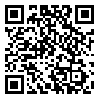1. Lin CJ, Wang SJ, Chen HJ. A field evaluation method for assessing whole body biomechanical joint stress in manual lifting tasks. Ind Health. 2006;44(4):604–12. [
DOI] [
PubMed]
2. Sterud T, Tynes T. Work-related psychosocial and mechanical risk factors for low back pain: a 3-year follow-up study of the general working population in Norway. Occup Environ Med. 2013;70(5):296–302. [
DOI] [
PubMed]
3. Nordin MA. Musculoskeletal disorder in the workplace. Louis. Mosby; 1997.
4. Coenen P, Gouttebarge V, van der Burght AS, van Dieën JH, Frings-Dresen MH, van der Beek AJ et al. The effect of lifting during work on low back pain: a health impact assessment based on a meta-analysis. Occup Environ Med. 2014;71(12):871–7. [
DOI] [
PubMed]
5. Rohlmann A, Pohl D, Bender A, Graichen F, Dymke J, Schmidt H et al. Activities of everyday life with high spinal loads. PLoS One. 2014;9(5):e98510. [
DOI] [
PubMed]
6. Webster BS, Snook SH. The cost of workers compensation low back pain claims. J Occup Med. 1990;32(1):13–5. [
DOI] [
PubMed]
7. Martimo KP, Verbeek J, Karppinen J, Furlan AD, Takala EP, Kuijer PP et al. Effect of training and lifting equipment for preventing back pain in lifting and handling: systematic review. BMJ. 2008;336(7641):429–31. [
DOI] [
PubMed]
8. Soares DP, de Castro MP, Mendes E, Machado L. Influence of wedges on lower limbs’ kinematics and net joint moments during healthy elderly gait using principal component analysis. Hum Mov Sci. 2014;38:319–30. [
DOI] [
PubMed]
9. Samimi H, Anbarian M, Kersting UG. The effect of foot wedges on postural sway and lower limb Muscle activity. International Journal of Sport Studies. 2014;4(12):1442–9.
10. Murley GS, Landorf KB, Menz HB, Bird AR. Effect of foot posture, foot orthoses and footwear on lower limb muscle activity during walking and running: a systematic review. Gait Posture. 2009;29(2):172–87. [
DOI] [
PubMed]
11. Van Gheluwe B, Dananberg HJ. Changes in plantar foot pressure with in-shoe varus or valgus wedging. J Am Podiatr Med Assoc. 2004;94(1):1–11. [
DOI] [
PubMed]
12. Murray N, Cipriani D, O’Rand D, Reed-Jones R. Effects of Foot Position during Squatting on the Quadriceps Femoris: An Electromyographic Study. Int J Exerc Sci. 2013;6(2):114–25. [
PubMed]
13. Sato K, Fortenbaugh D, Hydock DS. Kinematic changes using weightlifting shoes on barbell back squat. J Strength Cond Res. 2012;26(1):28–33. [
DOI] [
PubMed]
14. Edwards L, Dixon J, Kent JR, Hodgson D, Whittaker VJ. Effect of shoe heel height on vastus medialis and vastus lateralis electromyographic activity during sit to stand. J Orthop Surg. 2008;3(2):2. [
DOI] [
PubMed]
15. Ribeiro G, Dionísio V, Almeida G. Electromyographic activity during one-legged squatting under different foot position. Rev Bras Med Esporte. 2007;13:36–9.
16. Hung YJ, Gross MT. Effect of foot position on electromyographic activity of the vastus medialis oblique and vastus lateralis during lower-extremity weight-bearing activities. J Orthop Sports Phys Ther. 1999;29(2):93–102. [
DOI] [
PubMed]
17. Labaj A, Diesbourg T, Dumas G, Plamondom A, Mercheri A, Larue C. Posture and lifting exposures for daycare workers. Int J Ind Ergon. 2016;54:83–92. [
DOI]
18. Kim M, Yoo WG. Effects of Various Foot Wedge Boards on Vastus Medialis Oblique and Vastus Lateralis Muscles during Lunge Exercise. J Phys Ther Sci. 2013;25(3):233–4. [
DOI]
19. Frohm A, Halvorsen K, Thorstensson A. Patellar tendon load in different types of eccentric squats. Clin Biomech (Bristol, Avon). 2007;22(6):704–11. [
DOI] [
PubMed]
20. Guiry M. Comparisons of an overhead and single leg squat in barefoot, minimalist, and shod conditions, in Northridge[MSc Thesis] California state university; 2014.
21. Kongsgaard M, Aagaard P, Roikjaer S, Olsen D, Jensen M, Langberg H et al. Decline eccentric squats increases patellar tendon loading compared to standard eccentric squats. Clin Biomech (Bristol, Avon). 2006;21(7):748–54. [
DOI] [
PubMed]
22. Hamill J, Knutzen KM. Biomechanical Basis of Human Movement. 3rd ed. 2009.
23. Yeung S, Genaidy A, Deddens J, Shoaf C, Leung PC. A participatory approach to the study of lifting demands and musculoskeletal symptoms among Hong Kong workers. Occup Environ Med. 2003;60(10):730–8. [
DOI] [
PubMed]
24. Abdoli-E M, Stevenson JM. The effect of on-body lift assistive device on the lumbar 3D dynamic moments and EMG during asymmetric freestyle lifting. Clin Biomech (Bristol, Avon). 2008;23(3):372–80. [
DOI] [
PubMed]
25. Hermens HJ, Freriks B, Disselhorst-Klug C, Rau G. Development of recommendations for SEMG sensors and sensor placement procedures. J Electromyogr Kinesiol. 2000;10(5):361–74. [
DOI] [
PubMed]
26. Felson DT, Gross KD, Nevitt MC, Yang M, Lane NE, Torner JC et al. The effects of impaired joint position sense on the development and progression of pain and structural damage in knee osteoarthritis. Arthritis Rheum. 2009 ;61(8):1070–6. PMID:19644911 [
DOI]
27. Kingma I, Baten CT, Dolan P, Toussaint HM, van Dieën JH, de Looze MP et al. Lumbar loading during lifting: a comparative study of three measurement techniques. J Electromyogr Kinesiol. 2001;11(5):337–45. [
DOI] [
PubMed]
28. Cè E, Rampichini S, Agnello L, Limonta E, Veicsteinas A, Esposito F. Combined effects of fatigue and temperature manipulation on skeletal muscle electrical and mechanical characteristics during isometric contraction. J Electromyogr Kinesiol. 2012;22(3):348–55. [
DOI] [
PubMed]
29. Barber LA, Barrett RS, Gillett JG, Cresswell AG, Lichtwark GA. Neuromechanical properties of the triceps surae in young and older adults. Exp Gerontol. 2013;48(11):1147–55. [
DOI] [
PubMed]
30. Roy SH, Bonato P, Knaflitz M. EMG assessment of back muscle function during cyclical lifting. J Electromyogr Kinesiol. 1998;8(4):233–45. [
DOI] [
PubMed]
















































